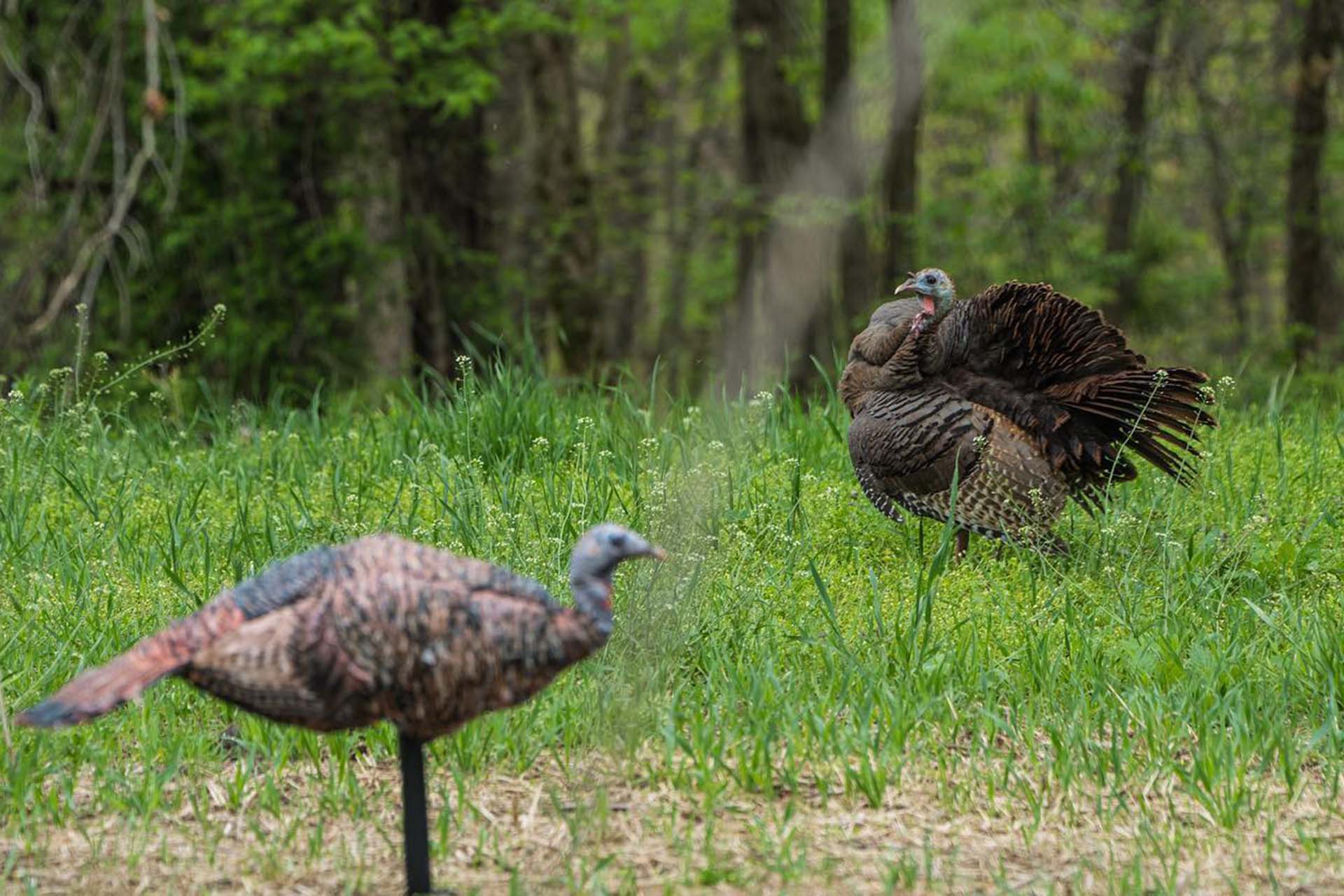Posted by CJ Davis on Mar 12, 2024
Turkey Hunting in the Wind
Spring is upon us. And that means a couple of things: turkey season is right around the corner and the weather is unpredictable. Spring weather can include excessive rain, howling winds, and sometimes even snow.
Most will agree that wind and turkey hunting don’t mix well. The ruffling of trees, branches, and brush make already skittish gobblers incredibly cautious of their surroundings. On top of that, turkeys can’t hear your calls and vice versa. Here are a few tips on turkey hunting in the wind to consider the next time you’re thinking about sleeping in.
Get Low
Target lower elevations such as creek bottoms, hollows, and draws that typically avoid the brunt of strong winds. Stay away from ridges, knobs and higher tracts of land, even if you know they house a lot of turkeys. The birds will likely vacate these areas as soon as the wind picks up.
Set up in a Field
Turkeys will often move out into fields just after sunrise when it's windy. This allows them full use of their 270-degree vision and provides refuge from predators using the swaying brush to their advantage. Instead of trying to get close to a roost and kill a bird at sunrise, head to a field where you know they’ll be and instead plan on your hunt ending at mid-morning. To do this successfully, you’ll need to do some scouting to find what fields turkeys are using.
Use Decoys
Decoys give turkeys a visual they desperately need when it’s windy. And wind serves as an ally by increasing movement for added realism. Even if you’re not able to find the leeward side of a hill or a low spot, a decoy is a tool you simply can’t do without on a windy day. Our turkey decoys have a strap that attaches the decoy to the leg pole to help manage the wind induced motion so your decoy moves more naturally.

A decoy is the most effective tool when turkey hunting in the wind.
Call Louder
Carry the louder calls you typically wouldn’t otherwise use. While diaphragm and slate calls often prove futile, tube and box calls that can pierce the wind increase your range. Also, be more aggressive and call longer than you normally would. Once a gobbler is located, quickly set up. He wouldn’t have heard you unless he was close. So don’t be surprised to find a turkey in your lap soon after a response.
Turkey hunting in the wind is challenging, but not impossible. As with every single aspect of this sport, the only way to learn is by doing it. As for these early spring days, all we can say is that we hope it’s a warm wind blowing straight out of the south.
